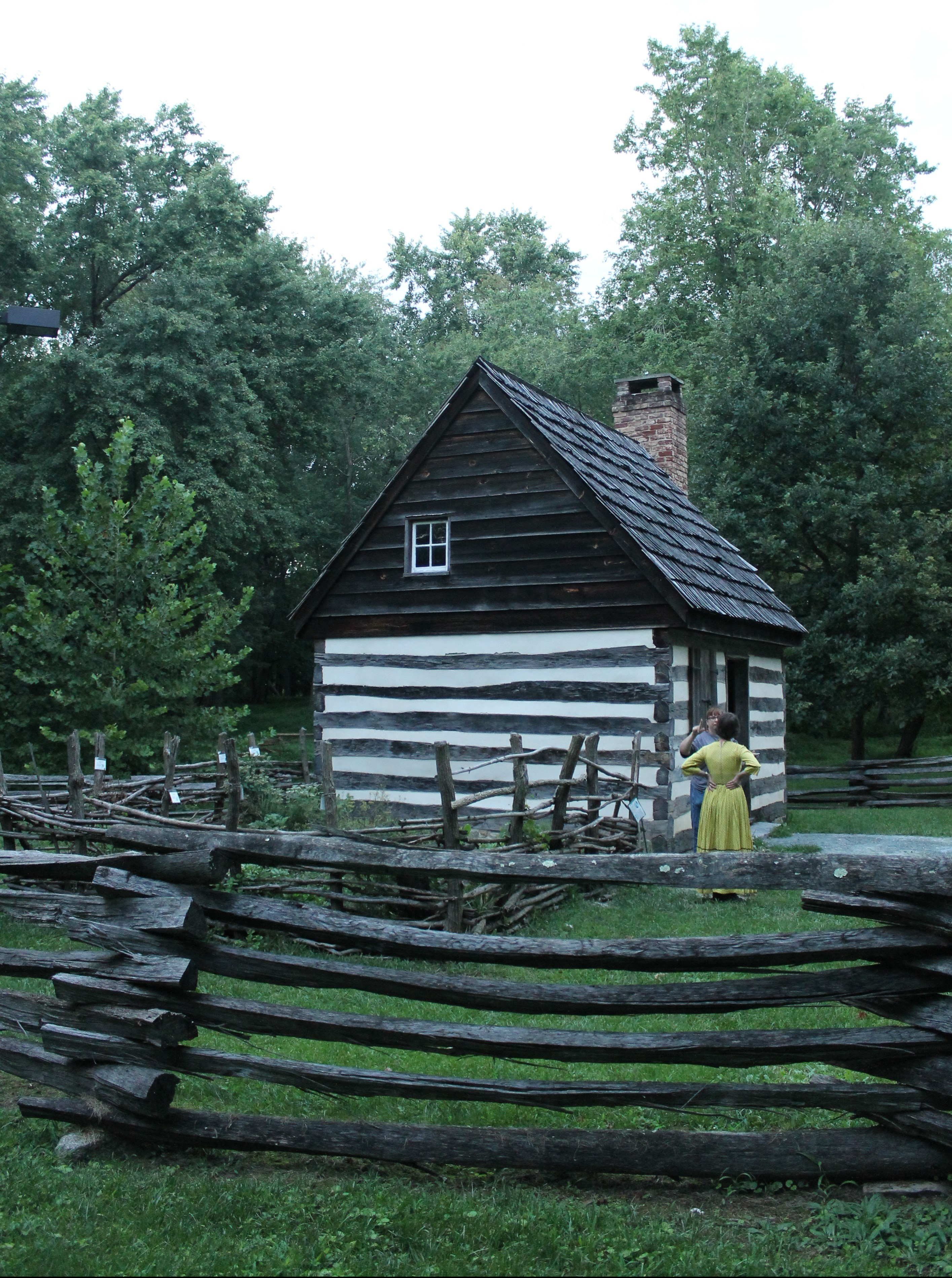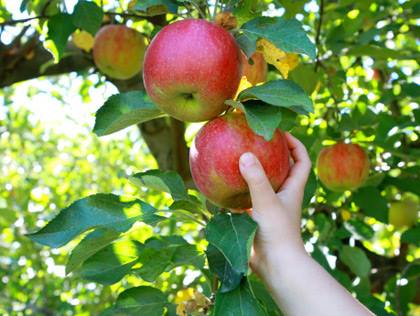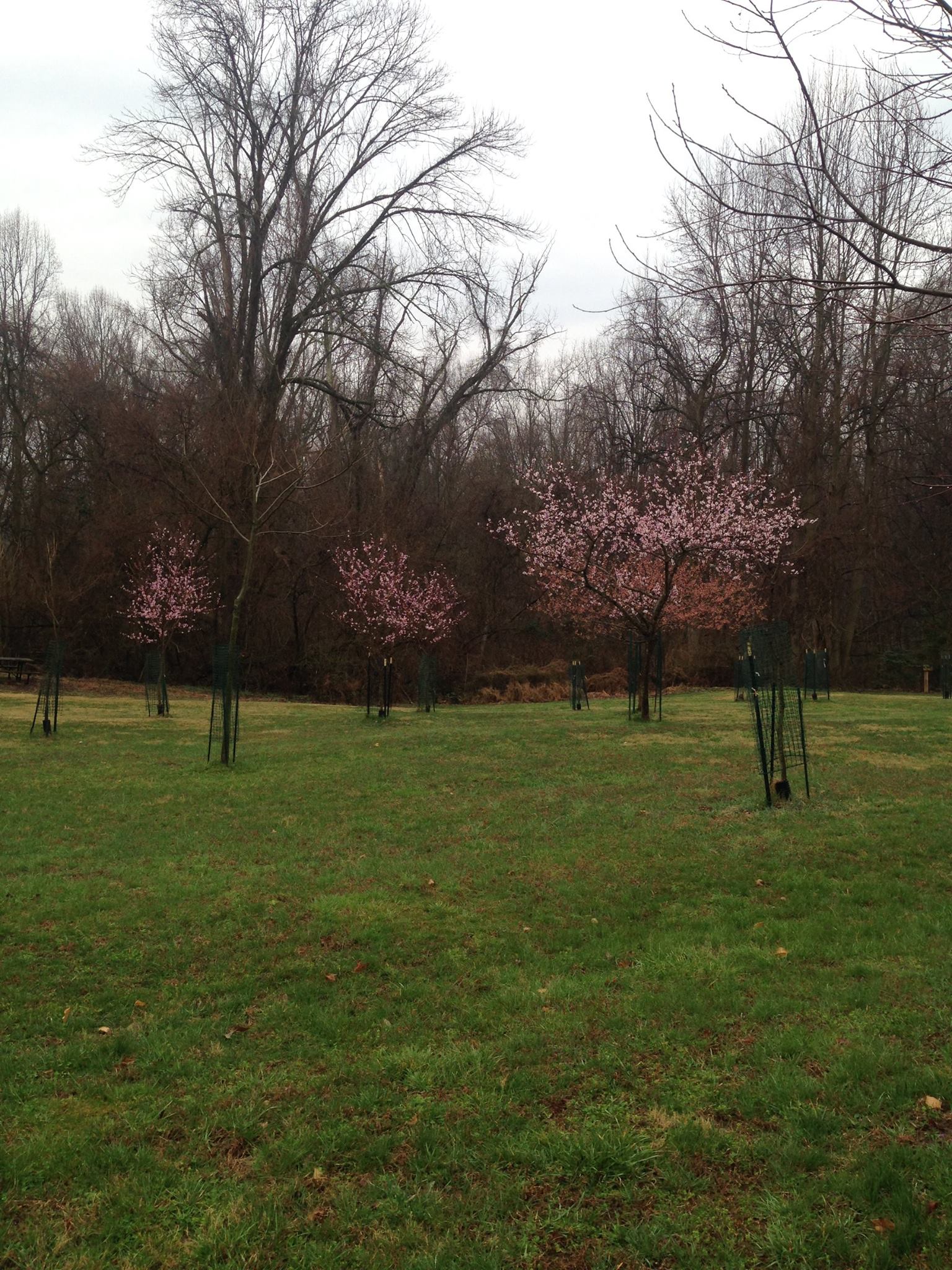Colonial farmsteaders like Banneker had to work hard to have a farm that would sustain them throughout the year. Often, they used the materials that nature produced in order to have a great working farm. Trees were cleared to build log cabins and furniture, and plots of land were carved out for gardens so that farmers could produce their own food. Animals like chickens, goats, and pigs were often found on these farmsteads for their food-producing qualities.
Our farmstead includes a colonial cabin, herb and vegetable gardens, and an orchard!
Cabin

When Banneker lived on this property, he lived in two log cabins. The first he shared with his parents and siblings when he was growing up. When his father died, he built a cabin for himself right next door to his mother. In 1806, on the day of Banneker’s funeral, his cabin burnt to the ground. His family’s cabin slowly deteriorated and fell into disrepair.
In the 1980s, the Park hosted an archaeological investigation of the cabin site. The information gathered through this scientific process was used to inform the County as to the type of cabin to reconstruct for visitors.

Our site’s reconstructed cabin was completed in 2009, and has been an integral part of our programming ever since. The cabin demonstrates the life of a free African American man during the time when there was no plumbing or even electricity! Some features inside include a working fireplace, farming tools, and a root cellar. The cabin is unlocked by request for museum visitors.
Gardens

Our site features herb and vegetable gardens, both used for educational purposes. Colonists used herbs for cooking and medicinal remedies and often grew their own vegetables in order to be self-sustaining within their farmstead. Our herb garden is located along the perimeter of the cabin, and the vegetable garden sits along the tree line to the north of the cabin. Both gardens are a magnificent site to see in the spring, summer, and fall.
Orchard

Along the perimeter of the north parking lot, visitors can walk through an orchard! Banneker might have grown some varieties of the trees you see here. The fruits of these trees are often used by the park for public programming, or is often enjoyed by our local deer population!
Apiary
In 1797, Banneker wrote in his journal about his bee keeping:

“In the month of January 1797, on a pleasant day for the Season I observed my honey bees to be out of their hives and Seemed very busy all but one hive, upon examination I found all the bees had evacuated the hive and left not a drop of honey behind them, and on the 9th day of February ensuing, I killed the neighboring hive of Bees on a Special occasion and found a great quantity of honey considering the season, which I immagine the Stronger had violently taken from the weaker and the weaker had persued them to their home resolved to be benefitted by their Labour or die in the contest.”

Cabin 
Herb Garden 
Cooking on an Open Fire 
Water Buckets 
Vegetable Garden 
Orchard in Bloom